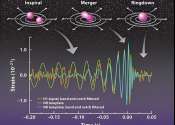Astronomers discover new supergiant-rich stellar cluster
Astronomers report the discovery of a new galactic stellar cluster located some 24,000 light years away. The newfound cluster, which received the designation Barbá 2, turns out to host at least several supergiant stars. ...









